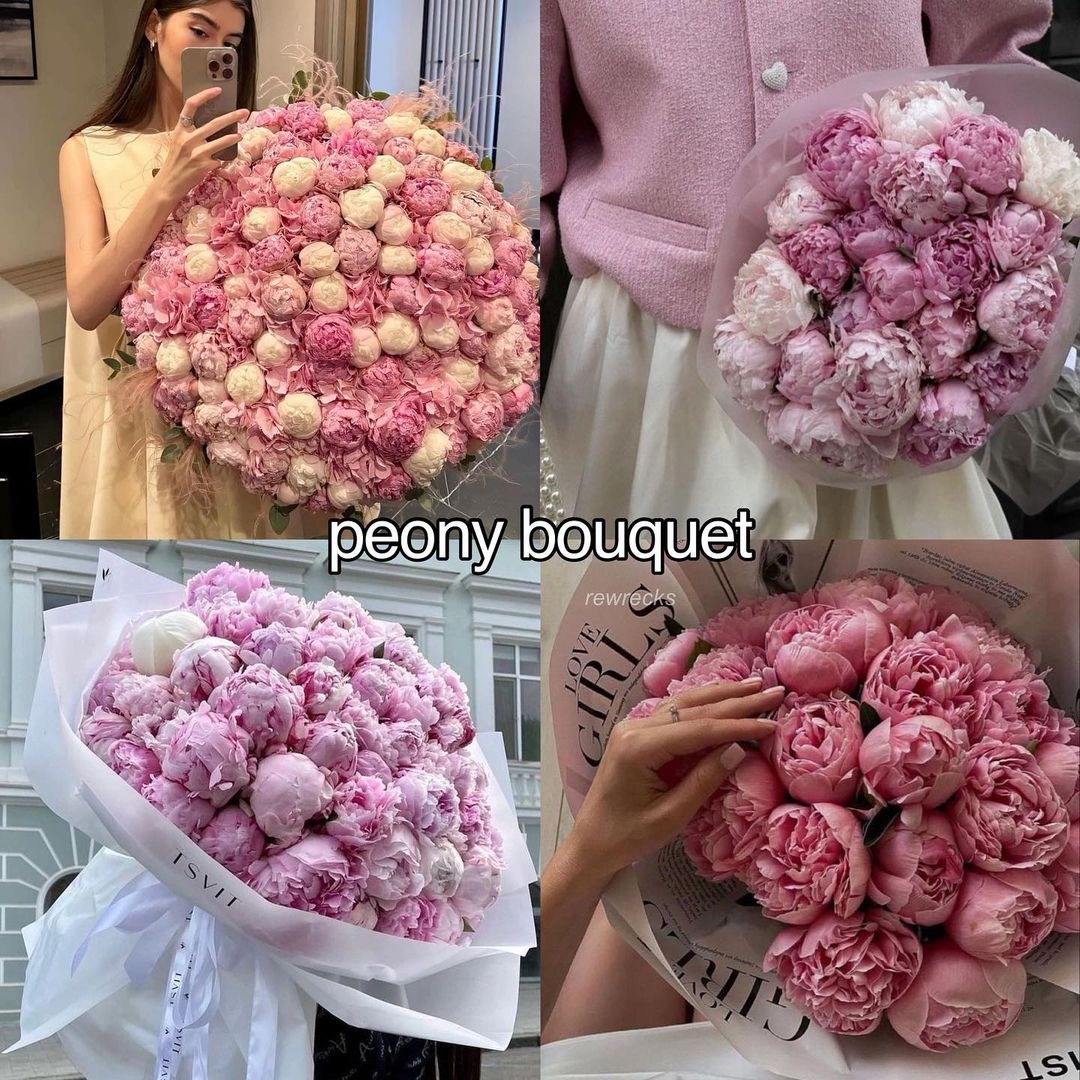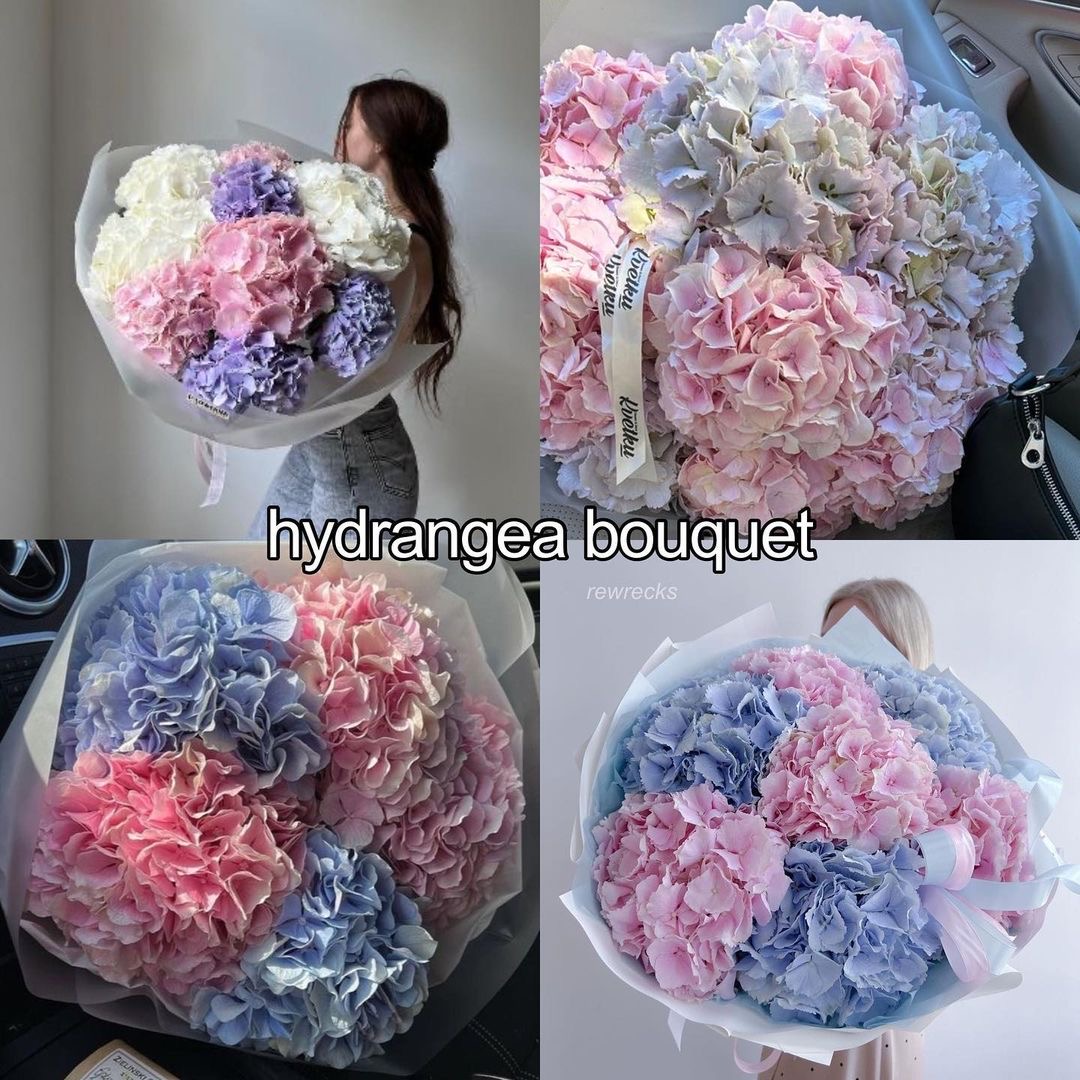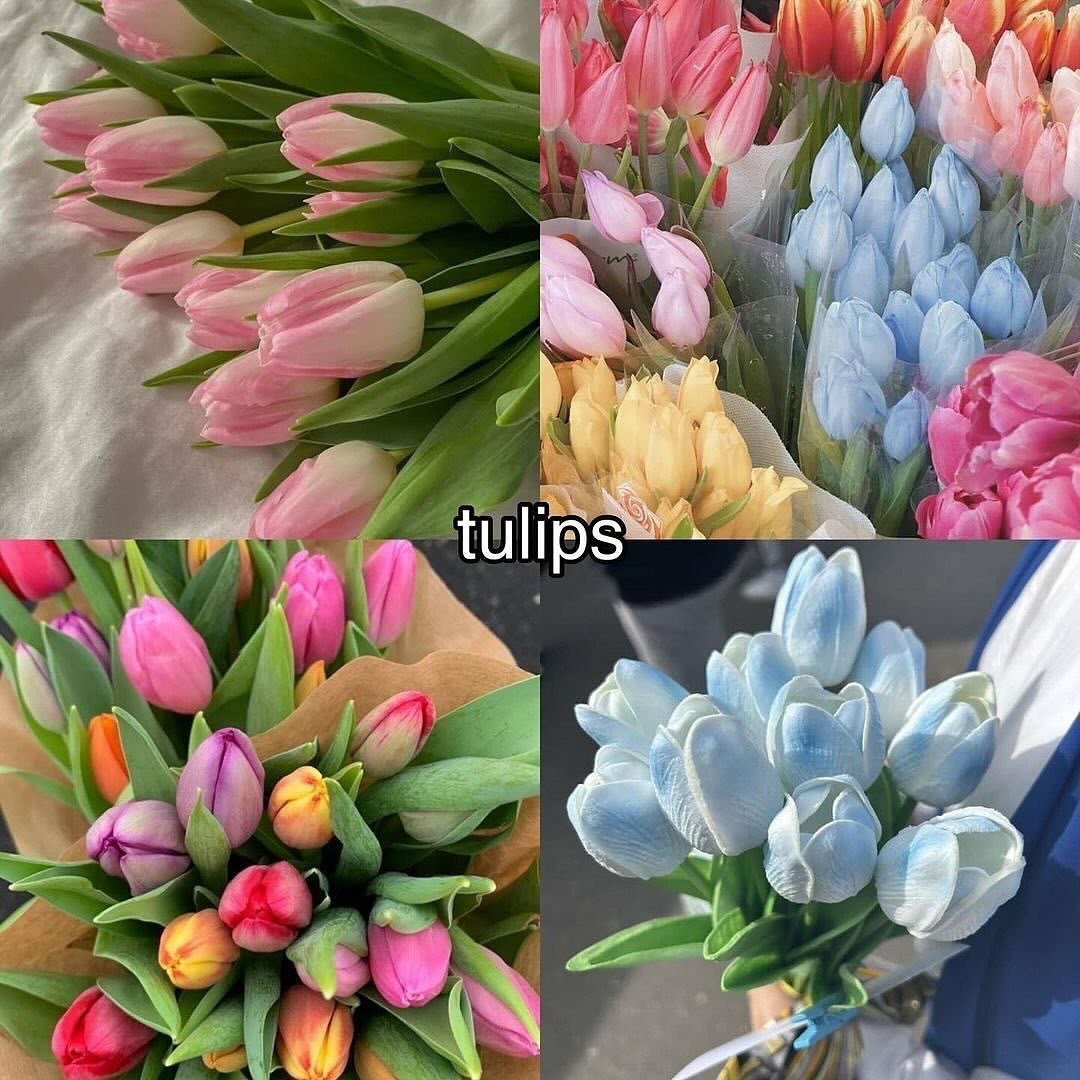Daisies are such cheerful flowers! They symbolize purity, innocence, and new beginnings. Here are a few interesting facts about them:
### Types of Daisies
1. **Common Daisy (Bellis perennis)**: Often found in lawns and meadows, it's a classic symbol of spring.
2. **Gerbera Daisy**: Known for their vibrant colors, these are popular in floral arrangements.
3. **Shasta Daisy**: A hybrid variety with large white petals and a sunny yellow center, great for gardens.
### Care Tips
- **Light**: Daisies thrive in full sun but can tolerate partial shade.
- **Soil**: Well-drained soil is essential; they prefer slightly acidic to neutral pH.
- **Water**: Water them regularly, especially during dry spells, but avoid overwatering.
### Uses
- **Bouquets**: Daisies add a whimsical touch to any arrangement.
- **Gardening**: They attract pollinators, making them a great addition to any garden.
If you have a specific aspect of daisies in mind—like planting, arrangements, or meanings—let me know!

Roses are one of the most beloved flowers, known for their beauty and rich symbolism. Here’s a deeper look at roses:
### Types of Roses
1. **Hybrid Tea Roses**: Known for their large blooms and classic shape, perfect for bouquets.
2. **Floribunda Roses**: These produce clusters of flowers, offering vibrant color and fragrance.
3. **Climbing Roses**: Ideal for trellises and fences, they can add vertical interest to gardens.
4. **Miniature Roses**: Small and charming, these are great for pots and small spaces.
### Symbolism
- **Red Roses**: Love and passion.
- **Pink Roses**: Admiration and gratitude.
- **Yellow Roses**: Friendship and joy.
- **White Roses**: Purity and new beginnings.
- **Orange Roses**: Enthusiasm and fascination.
### Care Tips
- **Sunlight**: Roses thrive in full sun, ideally 6-8 hours a day.
- **Soil**: Well-draining, nutrient-rich soil is best.
- **Watering**: Regular watering is important, especially during dry spells, but avoid wetting the foliage.
### Uses
- **Bouquets**: Perfect for romantic occasions, weddings, and celebrations.
- **Gardening**: Can enhance any garden with their variety and fragrance.
If you're interested in specific varieties, care tips, or how to arrange roses, let me know!
Orchids are a stunning and diverse group of flowers, renowned for their unique shapes and vibrant colors. Here’s a closer look at orchids:
### Types of Orchids
1. **Phalaenopsis (Moth Orchid)**: One of the most popular varieties, known for its long-lasting blooms and ease of care.
2. **Cattleya**: Famous for their large, fragrant flowers, often used in corsages.
3. **Dendrobium**: These come in various colors and sizes, often with cascading blooms.
4. **Oncidium**: Known for their delicate, dancing flower spikes and spotted petals.
### Symbolism
- **Love and Beauty**: Orchids are often associated with exotic beauty and refined luxury.
- **Strength and Fertility**: In many cultures, they symbolize strength and fertility.
### Care Tips
- **Light**: Most orchids prefer bright, indirect light. Avoid direct sunlight, which can scorch their leaves.
- **Watering**: Allow the potting mix to dry slightly between waterings. Overwatering is a common issue.
- **Humidity**: Orchids thrive in high humidity. Misting them or placing a humidity tray nearby can help.
### Uses
- **Decorative Plants**: Orchids make elegant houseplants and stunning centerpieces.
- **Gifts**: They are often given as gifts for special occasions due to their beauty and longevity.
If you have specific questions about caring for orchids or particular varieties, feel free to ask!
Lilies are elegant flowers known for their beauty and fragrance. Here’s a closer look at them:
### Types of Lilies
1. **Oriental Lilies**: Known for their large blooms and sweet scent, often in white, pink, or red.
2. **Asiatic Lilies**: These have vibrant colors and are typically unscented, making them great for arrangements.
3. **Trumpet Lilies**: Characterized by their trumpet-shaped flowers and strong fragrance.
4. **Daylilies**: Not true lilies, but popular for their hardy nature and variety of colors.
### Symbolism
- **Purity and Transience**: Lilies often symbolize purity, renewal, and the transience of life.
- **Passion and Love**: In some cultures, they represent passion and romantic love.
### Care Tips
- **Light**: Most lilies thrive in full sun to partial shade.
- **Soil**: Well-draining soil is crucial; they prefer slightly acidic to neutral pH.
- **Watering**: Regular watering is important, especially during dry spells, but avoid waterlogged conditions.
### Uses
- **Bouquets**: Lilies are a popular choice for floral arrangements and special occasions.
- **Gardening**: They add height and drama to garden beds and borders.
If you want more information on specific types or care techniques, just let me know!
Marigolds are vibrant and hardy flowers, often celebrated for their bright colors and pest-repelling properties. Here’s a closer look at them:
### Types of Marigolds
1. **African Marigold (Tagetes erecta)**: Known for their large, pom-pom-like blooms, these are great for making a bold statement in gardens.
2. **French Marigold (Tagetes patula)**: Smaller and bushier, they come in a variety of colors and are often used in borders.
3. **Signet Marigold (Tagetes tenuifolia)**: These have smaller, more delicate flowers and are sometimes used in culinary dishes for their edible petals.
### Symbolism
- **Protection and Good Fortune**: In many cultures, marigolds symbolize protection and are used in rituals.
- **Joy and Celebration**: Their bright colors are often associated with happiness and celebration.
### Care Tips
- **Light**: Marigolds thrive in full sun, requiring at least six hours of sunlight daily.
- **Soil**: They prefer well-drained soil and can tolerate poor soil conditions.
- **Watering**: Water them regularly, but ensure good drainage to avoid root rot.
### Uses
- **Gardening**: Great for companion planting, as they deter pests like nematodes.
- **Decorative**: Their cheerful blooms make excellent additions to flower beds and arrangements.
If you have specific questions about growing or using marigolds, feel free to ask!
Peonies are beloved flowers known for their lush, full blooms and delightful fragrance. Here’s an overview of peonies:
### Types of Peonies
1. **Herbaceous Peonies**: These are perennial plants that die back to the ground each winter and produce large, showy flowers in late spring to early summer.
2. **Tree Peonies**: These have woody stems and can grow much larger, producing beautiful blooms that may be larger and more delicate than herbaceous varieties.
3. **Intersectional (Itoh) Peonies**: A hybrid between tree and herbaceous peonies, these combine the best features of both, offering strong stems and abundant blooms.
### Symbolism
- **Romance and Prosperity**: Peonies often symbolize love, prosperity, and good fortune.
- **Bashfulness**: In some cultures, they also represent bashfulness or shame.
### Care Tips
- **Light**: Peonies prefer full sun, ideally 6-8 hours of direct sunlight daily.
- **Soil**: Well-drained, fertile soil is essential. They thrive in slightly acidic to neutral pH.
- **Watering**: Regular watering during dry spells is important, especially when the buds are forming.
### Uses
- **Bouquets**: Their large, fragrant blooms make stunning focal points in floral arrangements.
- **Gardening**: Peonies are a favorite in perennial gardens, adding beauty and fragrance.
If you have specific questions about growing, caring for, or arranging peonies, just let me know!
Dahlias are stunning flowers known for their diverse shapes, sizes, and vibrant colors. Here’s a closer look at dahlias:
### Types of Dahlias
1. **Decorative Dahlias**: These have broad, flat petals and come in various colors, making them popular for arrangements.
2. **Cactus Dahlias**: Characterized by their spiky, tubular petals, they add texture and drama to gardens.
3. **Ball Dahlias**: These are round and compact, with a full appearance, often used in bouquets.
4. **Peony-Flowered Dahlias**: These resemble peonies with their layered, soft petals, offering a romantic look.
### Symbolism
- **Elegance and Dignity**: Dahlias symbolize elegance and dignity, making them a thoughtful gift.
- **Change and Personal Growth**: In some cultures, they represent the idea of personal growth and change.
### Care Tips
- **Light**: Dahlias thrive in full sun, needing at least 6-8 hours of sunlight daily.
- **Soil**: They prefer well-draining, fertile soil with a slightly acidic to neutral pH.
- **Watering**: Regular watering is essential, especially during dry spells. Ensure good drainage to avoid root rot.
### Uses
- **Gardening**: Dahlias are popular in garden beds and borders for their bold colors and long blooming season.
- **Bouquets**: Their unique shapes and colors make them a favorite choice for floral arrangements and centerpieces.
If you have specific questions about dahlias or need tips on growing or arranging them, feel free to ask!
Baby's breath, or Gypsophila, is a delicate flowering plant often used to complement larger blooms in arrangements. Here’s a closer look at it:
### Types
1. **Gypsophila paniculata**: The most common variety, known for its airy clusters of tiny white flowers.
2. **Gypsophila elegans**: This variety has a more compact growth habit and can feature pink flowers.
### Symbolism
- **Innocence and Purity**: Baby's breath symbolizes innocence and is often used in weddings and celebrations.
### Care Tips
- **Light**: Prefers full sun for at least 6 hours a day.
- **Soil**: Well-drained, sandy soil is ideal, as they do not like wet roots.
- **Watering**: Water moderately; allow the soil to dry out between waterings.
### Uses
- **Bouquets**: Commonly used in floral arrangements as filler, adding texture and a soft touch.
- **Decor**: Ideal for weddings and events, creating a romantic and whimsical atmosphere.
If you need more information on growing or using baby's breath, let me know!
Hydrangeas are beautiful and versatile flowering shrubs known for their large, colorful blooms. Here’s an overview:
### Types of Hydrangeas
1. **Bigleaf Hydrangeas (Hydrangea macrophylla)**: Known for their large blooms, they can be blue or pink depending on soil acidity.
2. **Panicle Hydrangeas (Hydrangea paniculata)**: These have conical flower clusters that start white and can turn pink as they mature.
3. **Smooth Hydrangeas (Hydrangea arborescens)**: Characterized by their round flower heads, often seen in white or green shades.
4. **Climbing Hydrangeas (Hydrangea anomala)**: These can climb walls and fences, producing lovely white flowers.
### Symbolism
- **Gratitude and Understanding**: Hydrangeas often symbolize heartfelt emotions, including gratitude and understanding.
### Care Tips
- **Light**: Most prefer partial shade but can tolerate full sun in cooler climates.
- **Soil**: They thrive in well-drained, rich soil; soil pH can affect bloom color, especially in bigleaf varieties.
- **Watering**: Regular watering is crucial, especially in dry periods; they prefer consistent moisture.
### Uses
- **Gardening**: Great for borders, hedges, and as focal points in gardens due to their lush blooms.
- **Bouquets**: Popular in floral arrangements for their volume and color variety.
If you have specific questions about caring for or using hydrangeas, feel free to ask!
A mixed flower bouquet combines various blooms to create a vibrant and visually appealing arrangement. Here are some tips for creating a beautiful mixed flower bouquet:
### Flower Choices
1. **Focal Flowers**: Choose larger blooms like roses, peonies, or sunflowers as the main attraction.
2. **Filler Flowers**: Add smaller flowers like baby’s breath, daisies, or statice for texture.
3. **Greenery**: Incorporate foliage like eucalyptus or ferns to add depth and contrast.
### Arrangement Tips
- **Color Harmony**: Select flowers that complement each other in color. Use a mix of contrasting and analogous colors for balance.
- **Height Variation**: Vary the height of flowers for a more dynamic look. Taller stems can create interest and movement.
- **Layering**: Start with greenery, add focal flowers, and fill in with smaller blooms for a full, lush appearance.
### Care Tips
- **Water**: Change the water every few days and trim the stems to keep them fresh.
- **Temperature**: Keep the bouquet in a cool place away from direct sunlight to extend its lifespan.
### Uses
- **Occasions**: Perfect for weddings, birthdays, or as a thoughtful gift.
- **Decor**: Adds beauty to homes, offices, or special events.
If you need more specific ideas or flower combinations, just let me know!














Comments
Post a Comment